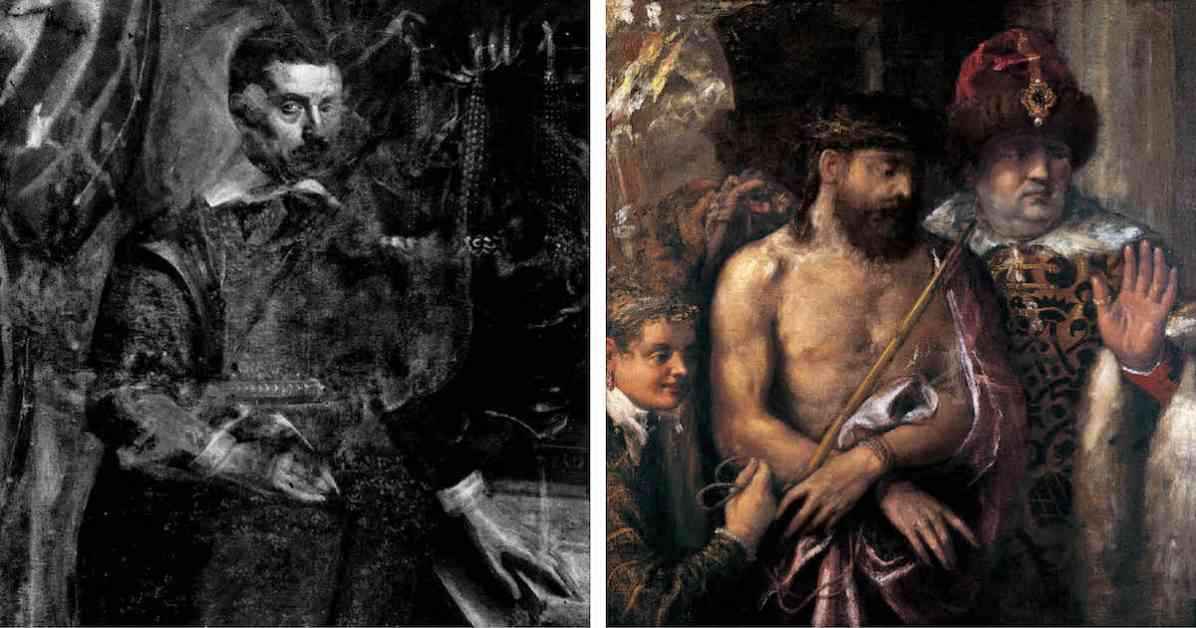Summary: Researchers in Cyprus recently uncovered a hidden portrait beneath Titian’s renowned painting, “Ecce Homo,” shedding light on a fascinating artistic mystery. The portrait, featuring an unidentified man with a mustache and quill, was concealed beneath layers of paint, revealing a different aspect of the masterpiece. Through meticulous analysis and X-ray imaging, experts reconstructed the hidden composition, offering a glimpse into Titian’s artistic process and creativity. The discovery has sparked intrigue and is now showcased at an exhibition in Limassol, inviting art enthusiasts to explore this captivating revelation.
A Captivating Discovery Unveiled
The art world was recently abuzz with a remarkable revelation emerging from the Andreas Pittas Art Characterization Laboratories (APAC) at the Cyprus Institute. Initially focused on examining the materiality and preservation of Titian’s painting “Ecce Homo,” researchers stumbled upon a hidden secret concealed beneath the surface. Through meticulous microscopic observations and X-ray imaging, a concealed portrait of an unidentified man was brought to light, adding a new layer of intrigue to the renowned masterpiece.
Nikolas Bakirtzis, the director of APAC, described the discovery as akin to solving a puzzle, with different pigments peeking through cracks in the painting, hinting at a hidden composition waiting to be unveiled. The recreated portrait depicts a man with a stern expression, holding a quill, and surrounded by what appears to be documents or books, hinting at his possible profession as a banker or lawyer. This unexpected find sheds light on Titian’s artistic process and adds a new dimension to the iconic painting, inviting viewers to delve deeper into its history.
Unraveling the Mystery: Titian’s Artistic Choices
The question that arises from this discovery is why Titian chose to conceal this intriguing portrait beneath “Ecce Homo.” According to Bakirtzis, the decision may have been a result of Titian’s artistic thriftiness and flexibility. By flipping the canvas upside-down and painting over the existing portrait, Titian demonstrated a bold and innovative approach to his work. This technique allowed him to visually weaken the hidden composition, providing a blank canvas for the creation of the new masterpiece.
The hidden portrait’s placement beneath “Ecce Homo” speaks volumes about Titian’s mastery and confidence as an artist. The seamless integration of the two compositions highlights his skill in adapting and transforming his work, showcasing his ability to innovate within the constraints of the existing painting. This artistic decision adds a layer of complexity and intrigue to the artwork, inviting viewers to contemplate the creative process behind Titian’s renowned masterpiece.
Exhibition and Exploration: Unveiling Titian’s Secrets
To share this fascinating discovery with art enthusiasts and scholars alike, an exhibition titled “Unseen Gaze – The Hidden Portrait under Titian’s Ecce Homo” is currently on view at Limassol’s Apothikes Papadaki center. The exhibition offers visitors a rare opportunity to witness both the hidden portrait and “Ecce Homo” side by side, providing a unique perspective on Titian’s artistic legacy and the hidden stories within his paintings.
From the mysterious figure in the concealed portrait to Titian’s innovative artistic techniques, the exhibition promises a journey into the hidden depths of one of art history’s most celebrated works. By exploring the intricate details and narratives behind these two compositions, viewers can gain a deeper appreciation for Titian’s genius and the timeless allure of his masterpieces.
As art enthusiasts and scholars flock to the exhibition, the hidden portrait beneath “Ecce Homo” continues to captivate audiences with its enigmatic charm and historical significance. The discovery of this concealed masterpiece serves as a testament to the enduring power of art to surprise, inspire, and reveal hidden truths, inviting us to look beyond the surface and uncover the hidden stories waiting to be told.












